18 Jan Extend the Life of Your Shoes: The Essential Shoe Care Guide
With busy schedules and active lifestyles, we leave less time for proper shoe care routines. However, a well-kept pair of shoes can elevate your overall appearance and boost your confidence. Shoes are often the first thing people notice, so taking care of them shows you care about your presentation.
That is why we’ve curated this shoe care guide with simple instructions that will fit seamlessly into your schedule.
The two most common formal shoe materials include suede and leather, and they both require proper care. Their distinct surfaces demand different approaches to conditioning and maintenance.
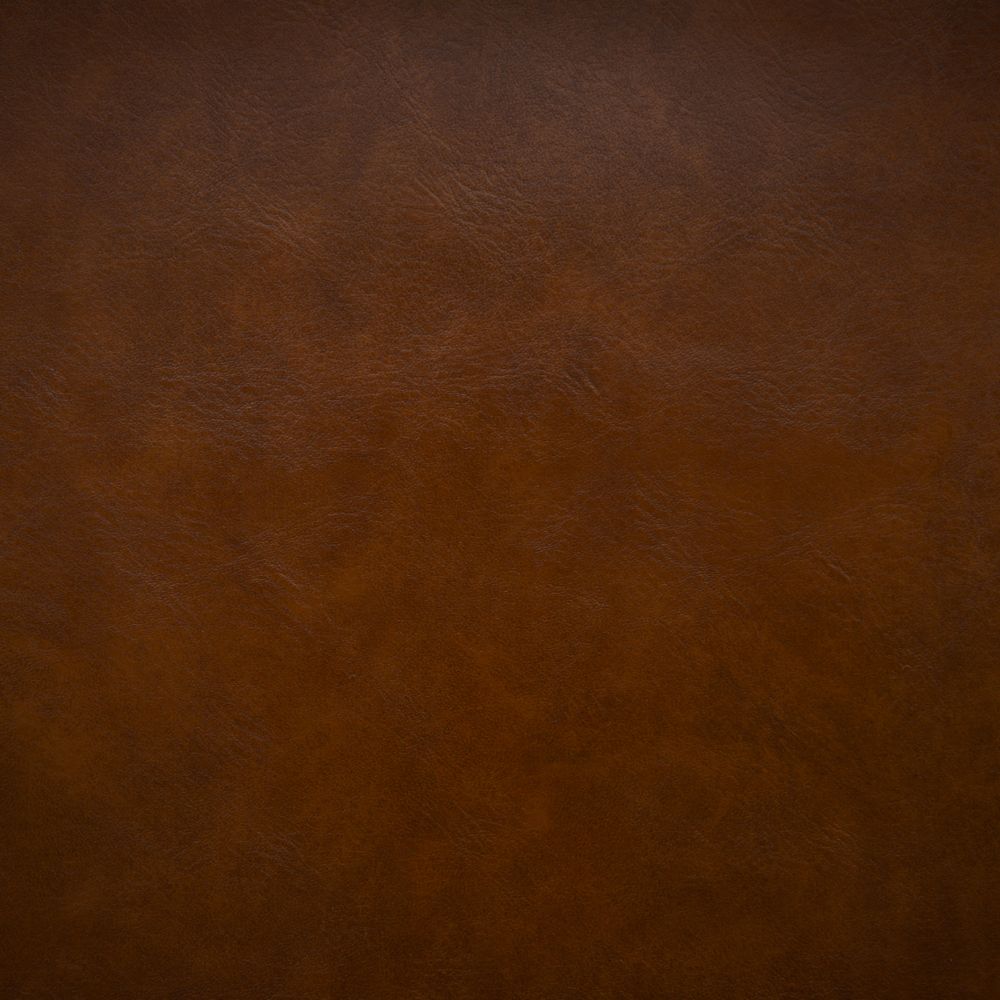
LEATHER
– Has a smooth, shiny surface often with visible grain patterns.
– More durable and resistant to abrasions, scratches, and moisture.
– Easier to clean and maintain with proper conditioning.
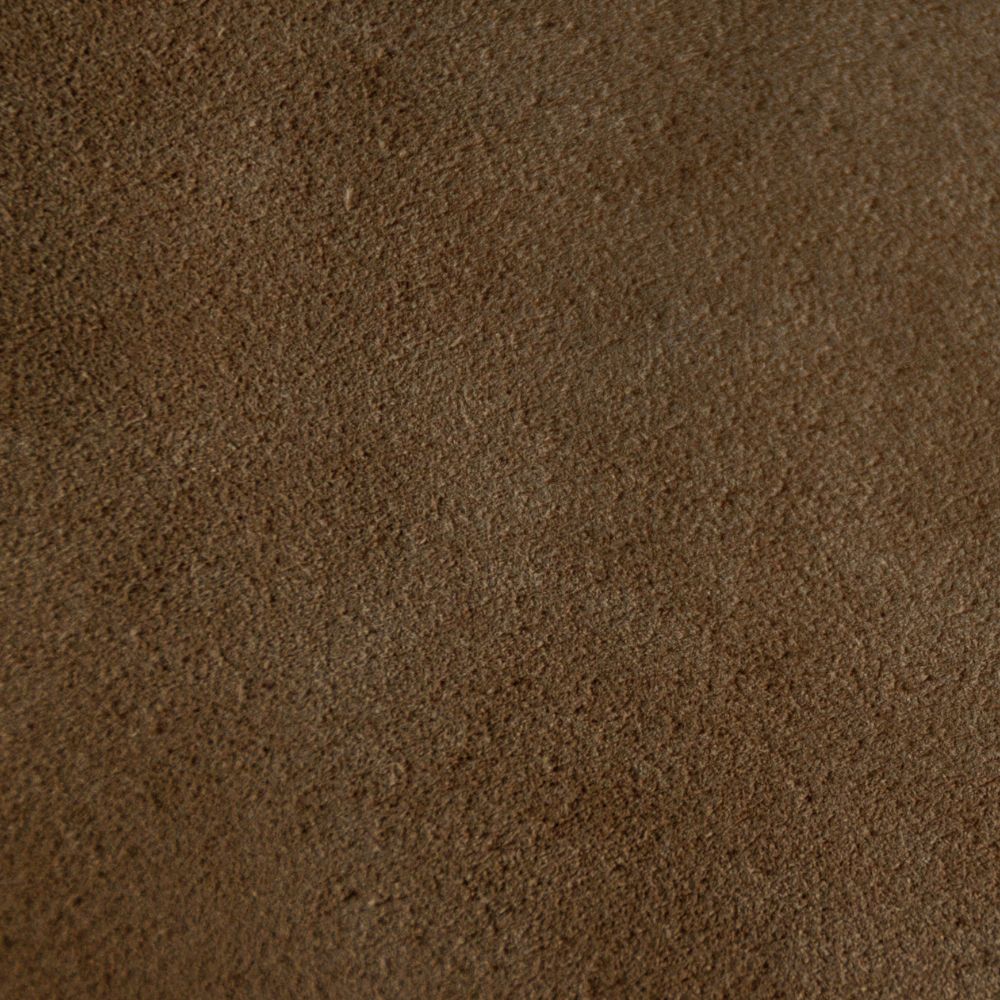
Suede
– Has a matte, napped surface with a velvety feel.
– More delicate and susceptible to staining, water damage, and wear.
– Requires special care products and protective sprays to preserve its appearance.
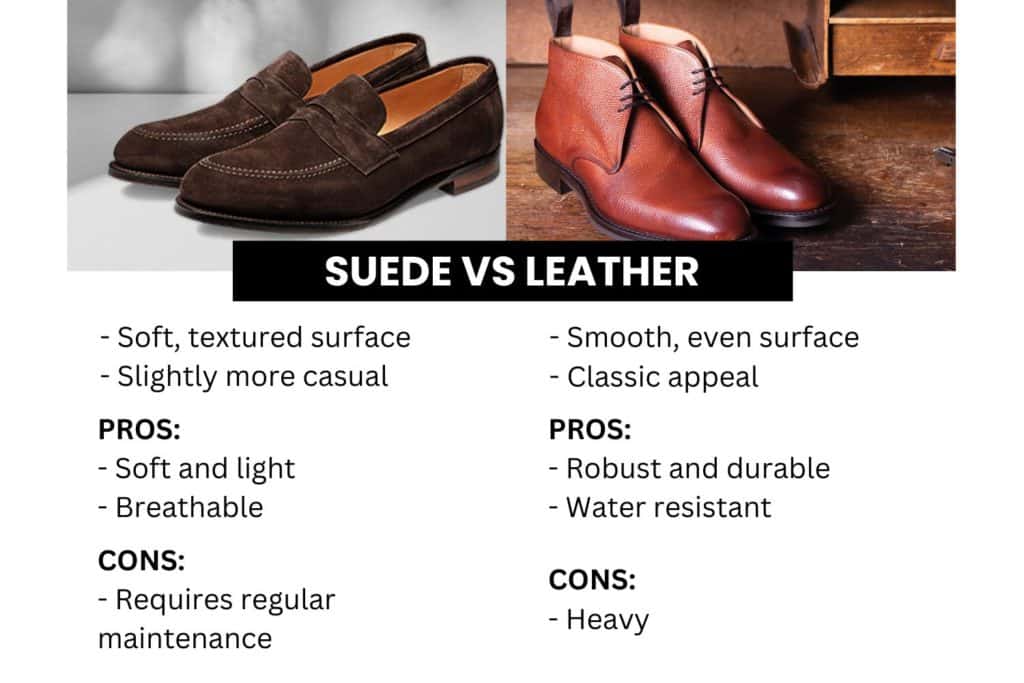
LEATHER SHOES
By pre-treating your leather shoes, you can significantly extend their lifespan and maintain their optimal look and feel.
You might have heard that it’s important to polish your shoes. However, did you know that it’s also important to condition them?
Contrary to leather polish, which merely enhances surface aesthetics, a leather conditioner works its magic beneath the surface.
It nourishes the material, keeping it supple, hydrated, and water-resistant. This enhanced flexibility translates to greater durability, protecting against tears and cracks.
CONDITIONING LEATHER SHOES
For best results, you should condition your shoes as soon as you get them out of the box (before wearing them for the 1st time), as well as every few months.
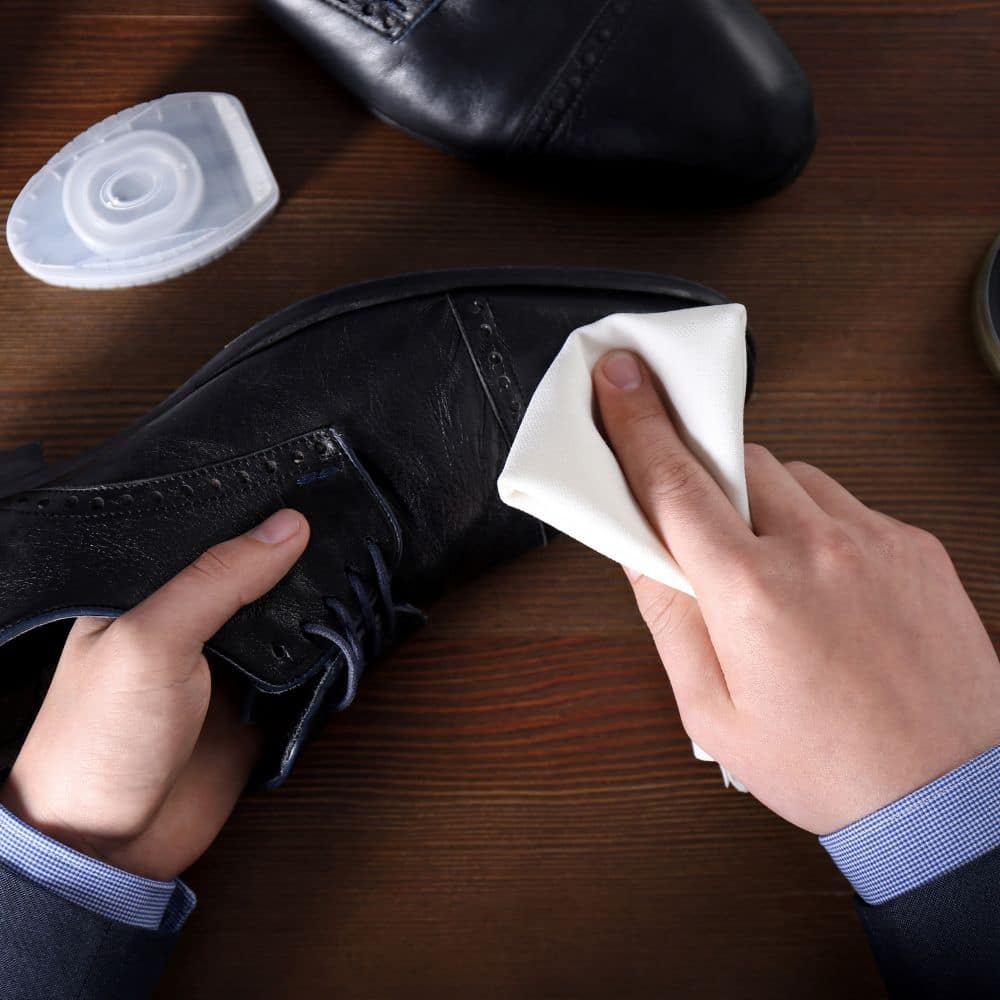
HOW TO APPLY CONDITIONER
– Apply conditioner with a soft cloth, including the tongue and outsole.
– Let the shoes air dry naturally after conditioning. Once dry, buff with a clean cloth or rag for a final touch.
– Additionally, you can give your shoes another wipe the next day to get rid of any excess conditioner.
POLISHING LEATHER SHOES
Once the conditioner has fully dried, we highly recommend giving your shoes a polish for an extra layer of protection.
There are two main types of shoe polish:
1. cream polish
2. wax polish
CREAM POLISH
Think of cream polish as a two-in-one wonder.
Not only does it have more colour pigments than wax, which means it can add colour to your shoes, but it also acts as a “moisturiser”, feeding the material and reducing the need for frequent leather conditioner applications.
When picking your cream polish, don’t worry if the colour doesn’t match your leather perfectly. Obviously don’t use black polish on tan shoes, but a slightly darker shade could help you build a bit of depth in the leather’s colour.
WAX POLISH
Wax polish is the perfect choice if you want your shoes to have a mirror shine. It also offers a stronger protection against water, than cream polish and can also help mask deeper scratches and imperfections.
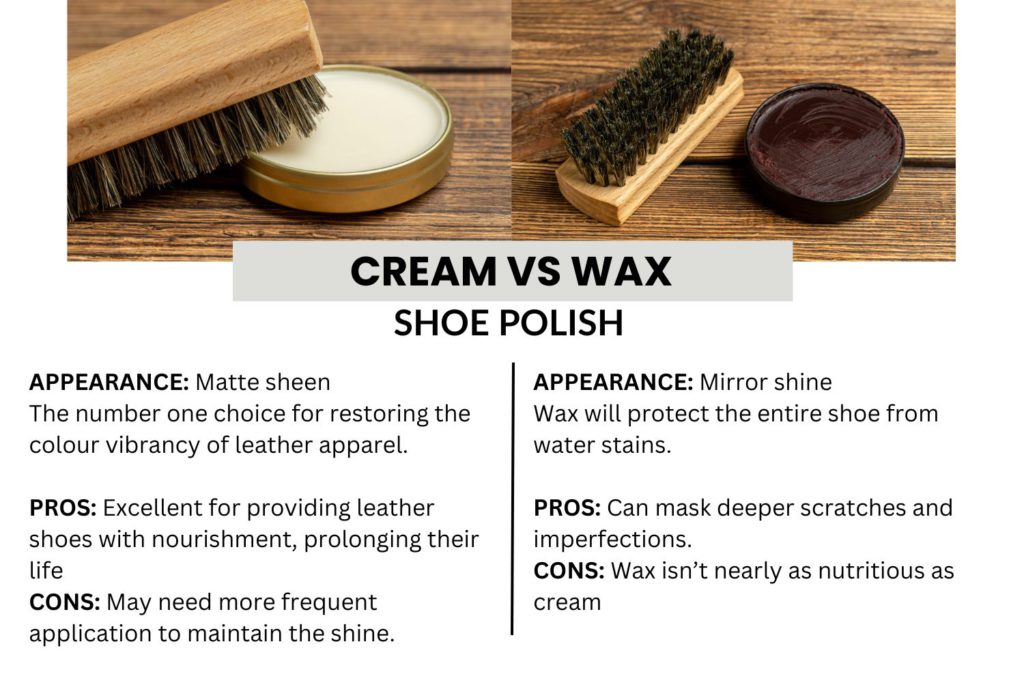
HOW TO APPLY POLISH
– Wipe your shoes with a damp cloth to remove dirt and let them dry completely.
– Using horsehair brush, apply plenty of polish in circular motions, focusing on the vamp, sides, and quarters.
– Let it air dry for few hours, once dry buff off any remaining polish residue with shoe-shine brush.
– Aim to polish your shoes every 2-4 weeks.

CLEANING LEATHER SHOES
– It is the best to clean a pair of shoes right after use. Cleaning shoes right after use makes the process easier and more effective.
– A damp cloth and saddle soap are perfect for fresh dirt layers. Avoid harsh chemicals and sponges to protect the leather.
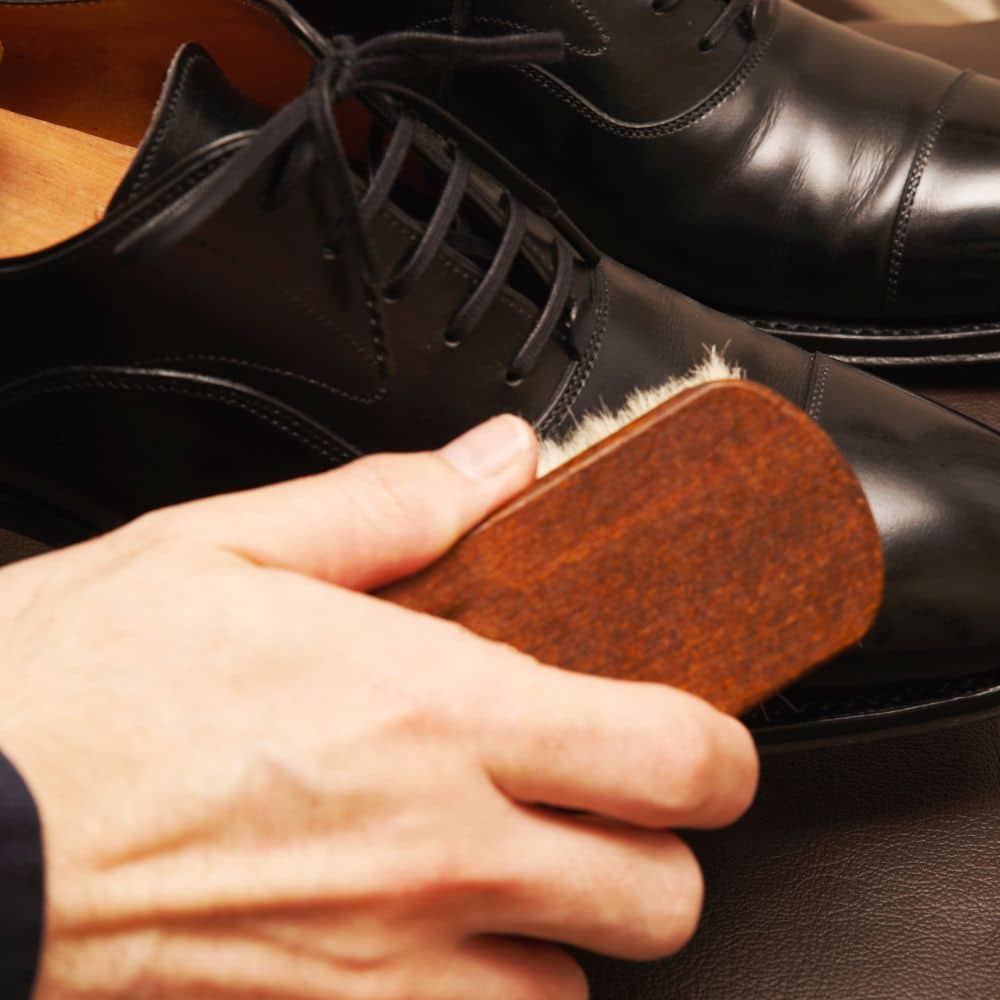
– If dirt has hardened, use a special brush made out of horsehair for dirt that hardened.
– Use a microfibre cloth to remove soap residue, then let your shoes air dry naturally, but away from the heat and direct sun.
– Remove and wash dirty laces separately with warm water and laundry detergent.
SUEDE SHOES
Whilst suede shoes look chic and sophisticated, they can be very easily ruined by water. Left untreated – once stained with rain and mud, it is very hard to make them look like new again.
Whilst we generally don’t recommend to wear suede shoes in the rain, we also realise that you’re probably unable to control the weather… so below are a few tips to help you extend the life of your gorgeous suede footwear.
SPRAYING SUEDE SHOES
When investing in a new pair of suede shoes, make sure to treat them with protective spray before the first wear. This will help create a barrier against rain and mud, especially if you live in a rainy climate or expect to wear these shoes in wet conditions.
Choose a protector specifically formulated for suede, not leather, as different formulas can damage the delicate fibres.
Spraying for protection:
– Give the waterproofing spray a good shake to ensure all the contents are evenly mixed.
– Hold the can about 6-8 inches away from the suede surface. Spray in short, light bursts, moving the can continuously to avoid soaking or creating drips.
– Pay special attention to high-wear areas like the toe box, heels, and edges. Don’t forget the sides and tongue!
– Apply two thin coats, letting the first coat dry completely (15-20 minutes) before adding the second. This ensures even coverage without over-saturating the delicate suede.
SUEDE BRUSH
Suede brush is an important tool when it comes to cleaning, however it can be also used for maintenance.
Brushing them at least once a week helps remove dust, dirt, and surface grime. This simple practice prevents build-up and keeps the suede looking smooth and healthy.
CLEANING SUEDE SHOES
– Use your suede brush to gently whisk away any surface dirt, dried stains, and stubborn mud.
– Use a suede eraser for more difficult stains such as watermarks. This eraser can be an effective spot cleaning tool.
Brushing and spot-cleaning are good first steps for cleaning suede shoes, but sometimes a dedicated suede cleaner is needed to tackle tougher dirt and stains.
— Brush your suede shoes thoroughly to remove surface dirt and dust.
— Dampen a clean cloth slightly and gently sponge your shoes to prepare for the cleaner.
— Use a dedicated suede cleaner and follow the product instructions. Gently rub it into the suede using your suede brush, focusing on any stains.
— After applying the cleaner, wipe down your shoes again with a clean, damp cloth.
— Let your shoes air dry completely away from direct heat or sunlight.
— Once dry, brush your shoes in the direction of the nap to restore their softness and smooth texture.
Formal Shoes Storage
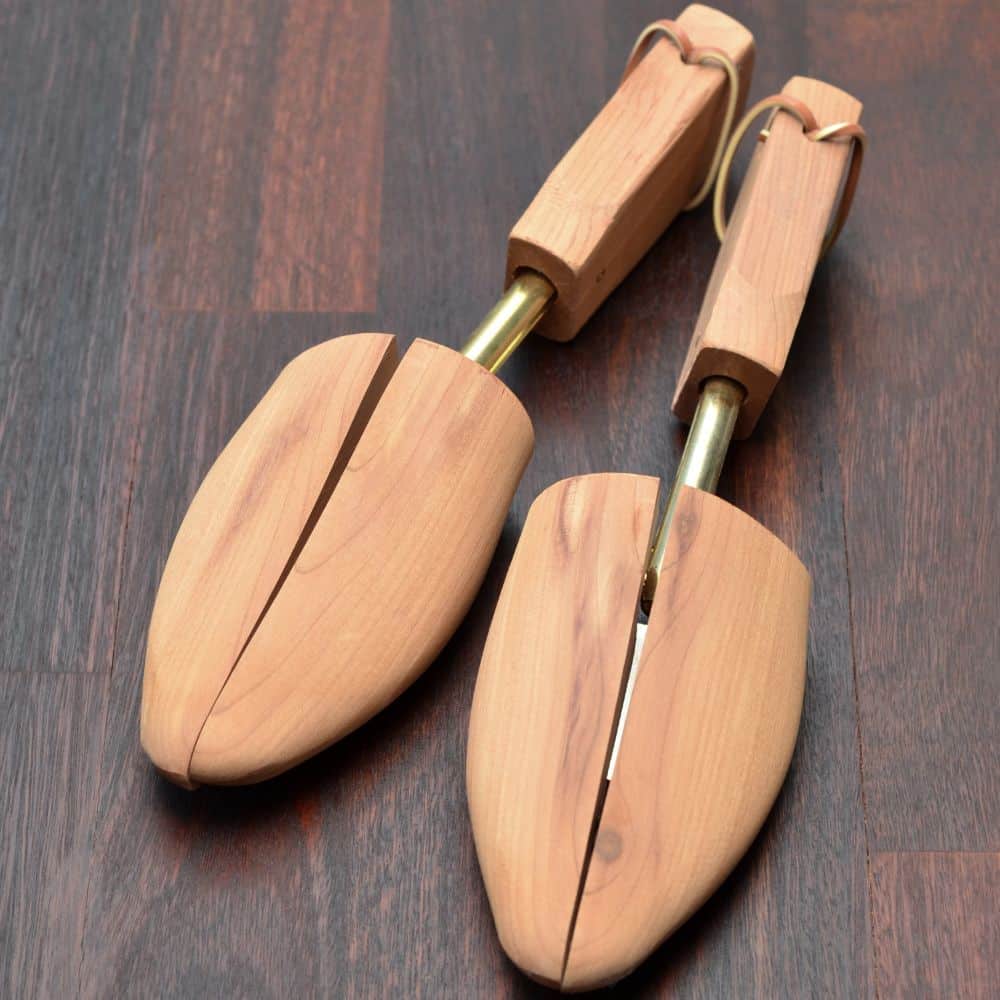
– Use shoe trees as this is essential for maintaining shape and preventing creases.
– If you don’t have shoe trees, you can temporarily use the original paper from the box for stuffing, but keep in mind that paper provides less support.
– Place them on well-ventilated shelves, avoiding direct sunlight or heat sources.
TREATMENT AND MAINTENANCE
Pre-treating new-bought trainers is crucial, as it gives them a protective shield against the elements and daily wear and tear. Remember, pre-treatment is most effective when done before the first wear!
Combining it with regular cleaning and proper storage will ensure your trainers remain stylish and in a great condition for years to come.
Spraying for protection:
The essential and most common pre-treatment is water/stain protector spray. The water/stain protector spray preventing dirt buildup and simplifying cleaning.
– Hold the spray can about 6 inches away from the shoes and apply a light, even coat, covering all areas, including the laces.
– Let the first coat dry completely, then apply one or two more coats for better protection.
– Follow the instructions on the spray for drying time and ensure good ventilation while spraying.
ODOUR PREVENTION
– Regular cleaning (including insoles) and airing out your trainers after use is crucial for odour prevention.
– If you anticipate sweaty feet or intense activity, consider a preventative spray before wearing them.
– Treatment: Spray after cleaning and airing out your trainers thoroughly.
– Consider using insoles with odour-absorbing materials like charcoal or wool.
– Avoid wearing the same pair of trainers every day to allow them to dry completely and prevent odour buildup.
Cleaning and Drying
– Mix a dash of mild dish soap with lukewarm water. Gently scrub your trainers with a soft-bristled brush, changing the water when it gets too dirty.
– Wipe clean with a microfibre towel, removing as much excess soap/detergent as possible.
– To finish up, spray your shoes with protective spray.
DRYING
— Let your trainers air dry at room temperature. Avoid radiators and direct sunlight as those can both warp and discolour materials, as well as weaken the glue that fuses the sole to the upper.
– Remove the laces and insoles, as this allows you to clean all the nooks and crannies.
– Brush off loose dirt using a soft brush.
– For mild stains, use gentle laundry detergent and slightly warmer water (around 30°C). Adding a little baking soda to the water with the detergent can help further neutralise odours and toughen up the cleaning power for mild stains.
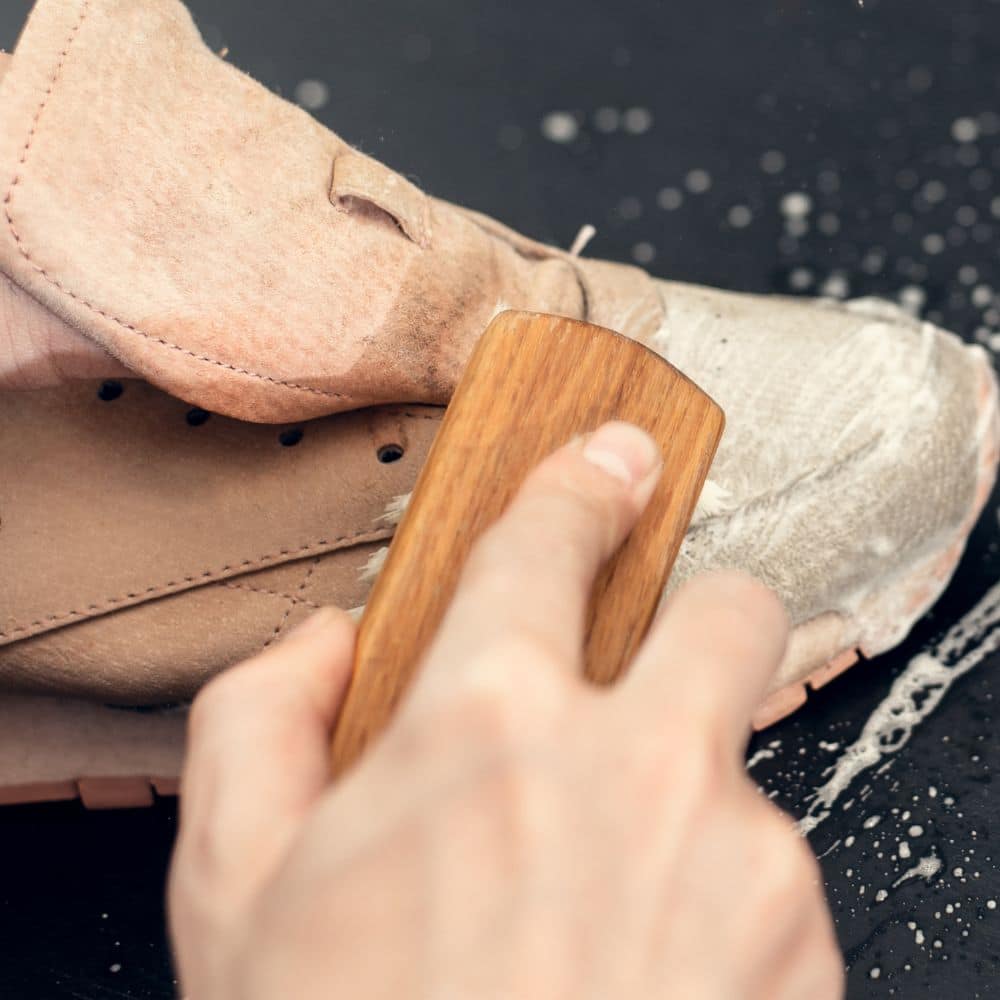
– Dip a soft brush (toothbrush for intricate areas) in the solution and scrub the canvas gently. Focus on areas with visible dirt or stains, but avoid harsh scrubbing which might damage the canvas.
– Rinse the brush frequently and rinse the shoes thoroughly with clean water.
DRYING
– Air drying is definitely the best method.
– Stuff the shoes with paper towels as it is a great way to maintain their shape. You can also use shoe trees if you have them.
– Avoid direct sunlight or heat sources, as they can cause the canvas to shrink or discolour.
Washing suede trainers requires a different approach than canvas shoes because the material is much more delicate.
– Remove the laces and insoles and wash separately with mild detergent.
– Use a soft suede brush to gently remove surface stains and dirt.
Important note:
Using toothbrush rather than suede brush, especially with excessive pressure, can damage the delicate suede nap, leading to a rougher texture and even bald spots.
– Use a suede eraser or a suede cleaning brush with a dedicated suede cleaning solution for tougher dirt and stains.
DRYING:
– Let the shoes air dry completely away from direct heat or sunlight.
– Stuff them with paper towels or crumpled newspaper to maintain their shape while drying.
SUEDE BRUSH:
– Once dry, brush the suede with a soft brush to restore the nap (the textured surface). You can also use a suede brush with a waterproofing spray to add an extra layer of protection against water and stains.
– It is recommended to brush gently nap of the suede and remove surface dirt before and after wearing to maintain the velvety texture and prevent dirt from becoming ingrained. Regular brushing also helps preserve the natural water resistance of suede, keeping your shoes looking their best for longer.
STORAGE
– Store shoes in a cool, dry place away from direct sunlight and heat sources. Excessive heat and humidity can dry out leather and cause other materials to deteriorate.
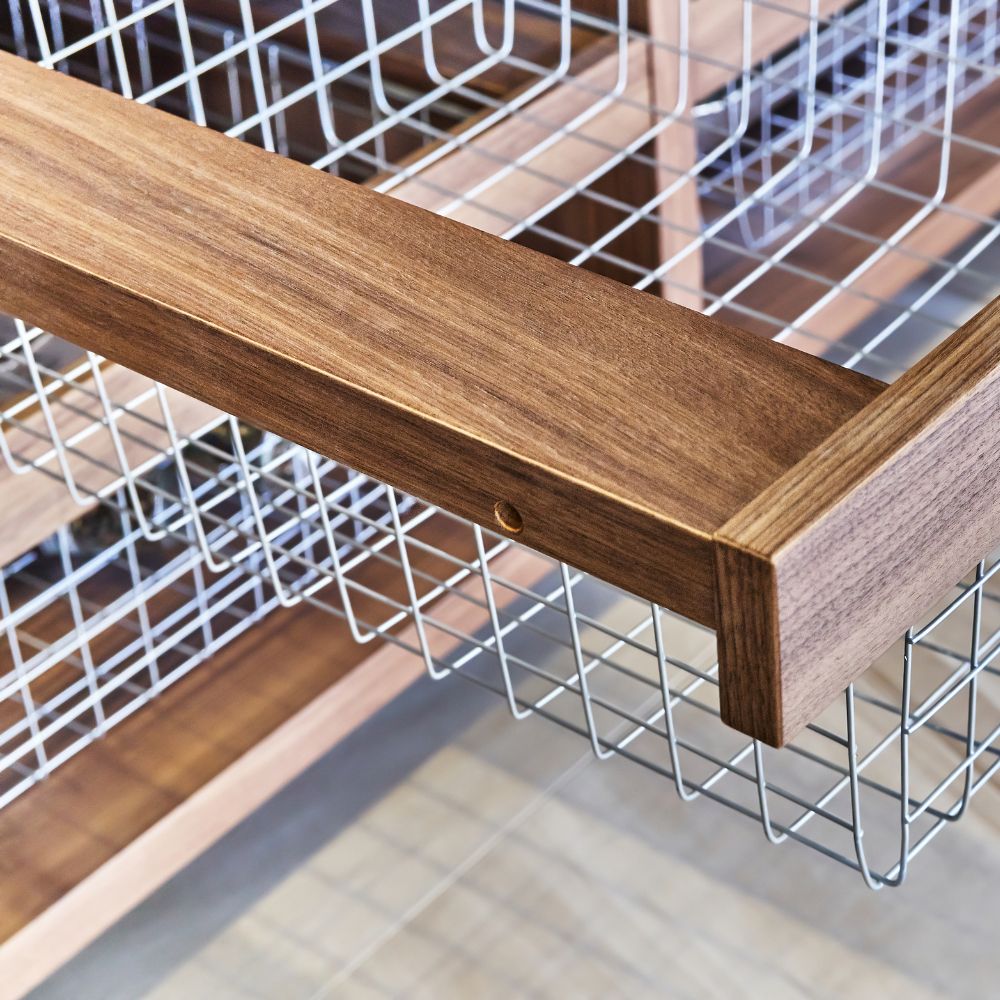
– Opt for breathable options like mesh baskets or open shelves to prevent moisture buildup.
– Categorise your shoes by activity (running, gym, casual) to avoid cross-contamination of dirt and odours.
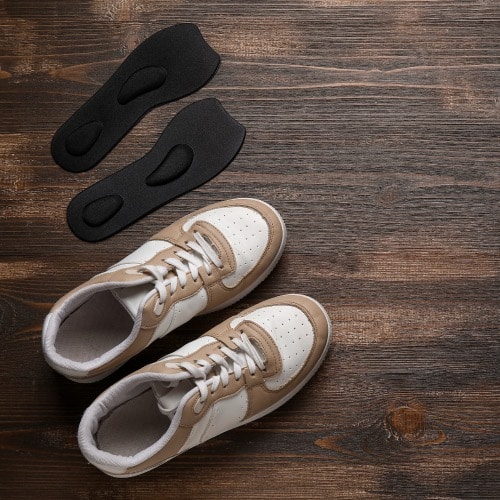
– Remove insoles regularly to prevent odour and mold growth.
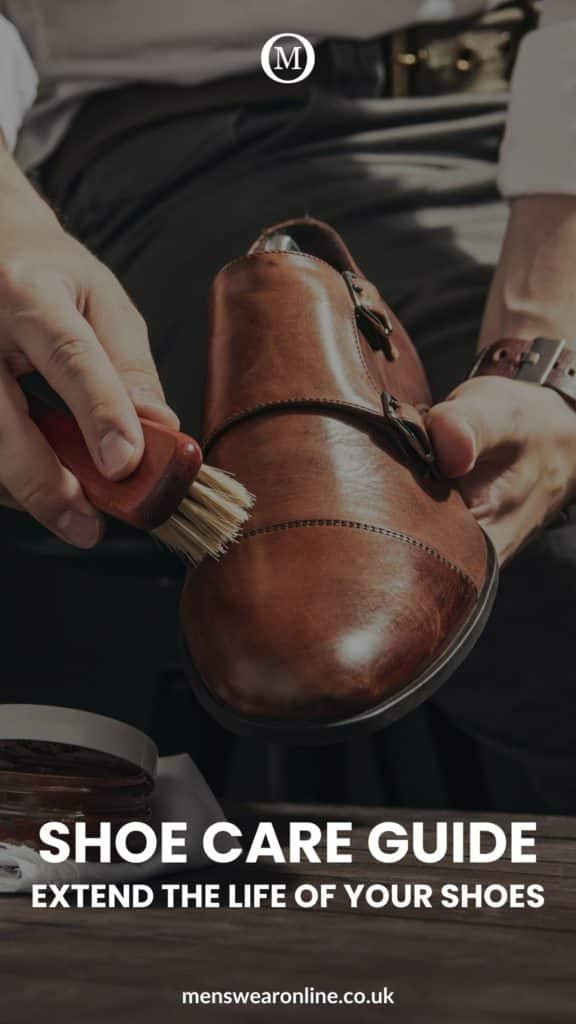
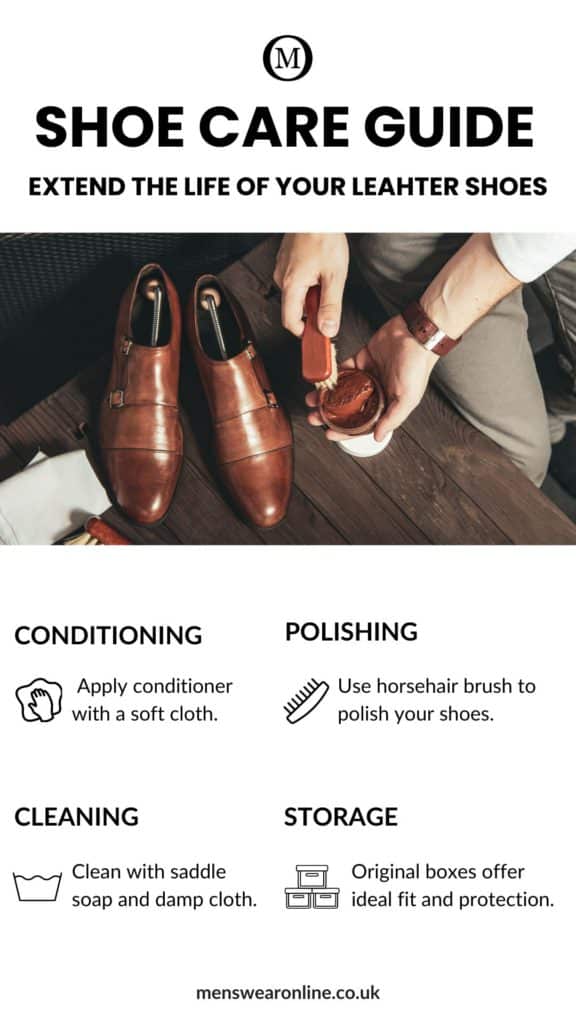
Currently studying Business Management and Marketing. Love spending my time at the cafes, trying out new drinks while reading a book.
-
Weronika Jasinskahttps://www.menswearonline.co.uk/author/weronika/July 9, 2024
-
Weronika Jasinskahttps://www.menswearonline.co.uk/author/weronika/June 18, 2024
-
Weronika Jasinskahttps://www.menswearonline.co.uk/author/weronika/June 1, 2024
-
Weronika Jasinskahttps://www.menswearonline.co.uk/author/weronika/May 2, 2024




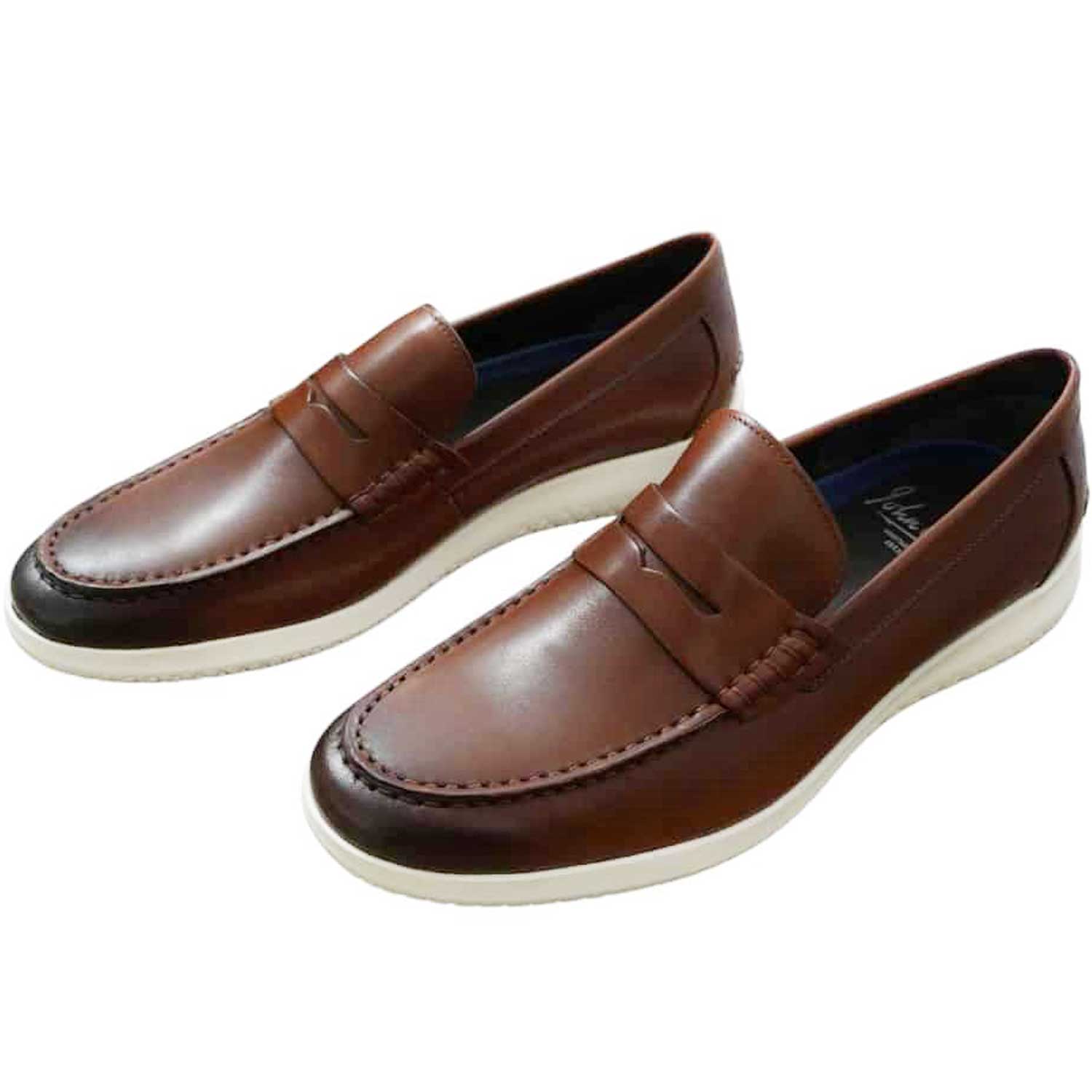


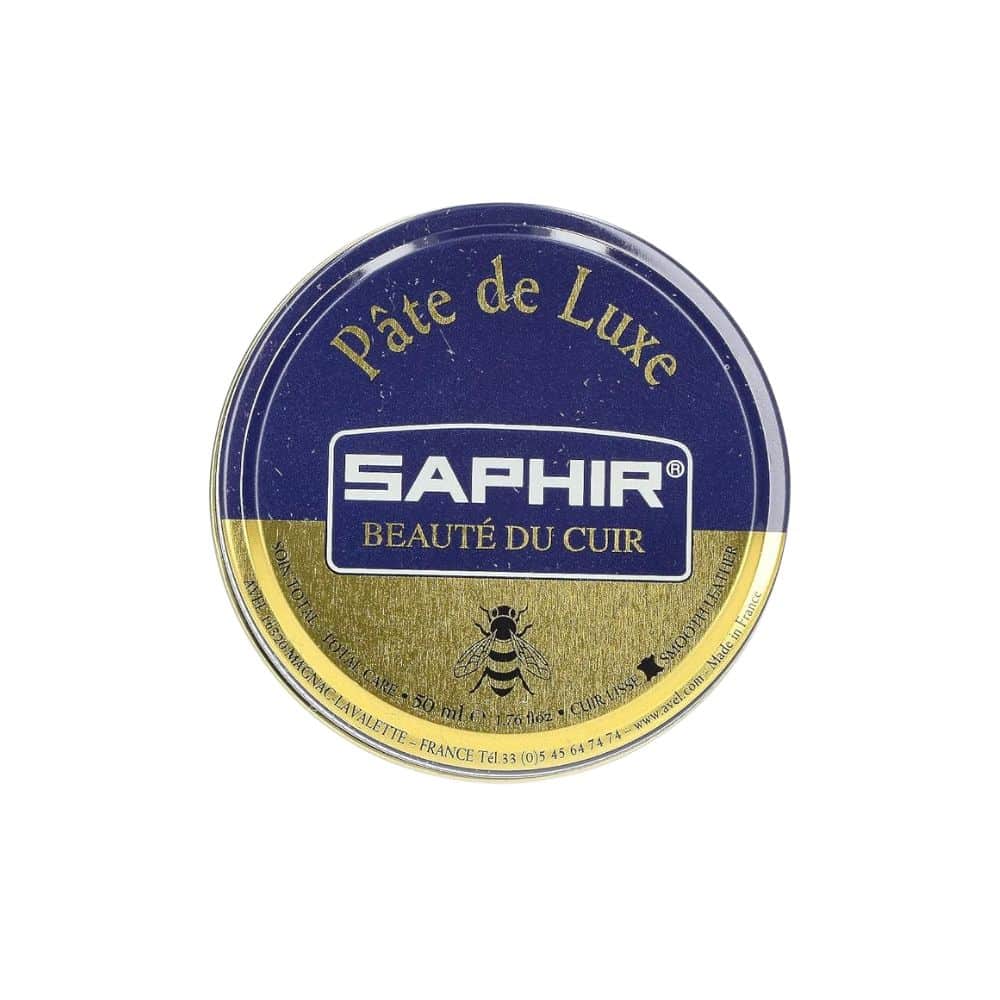

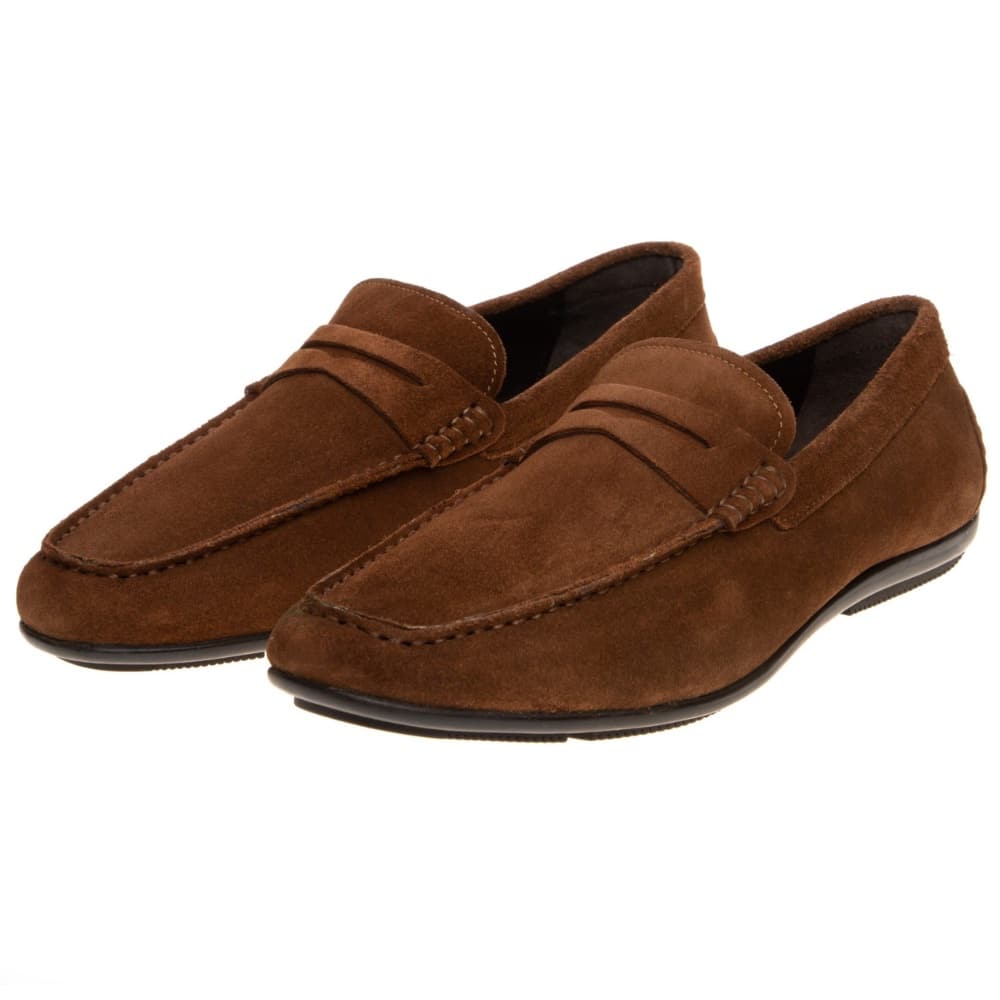

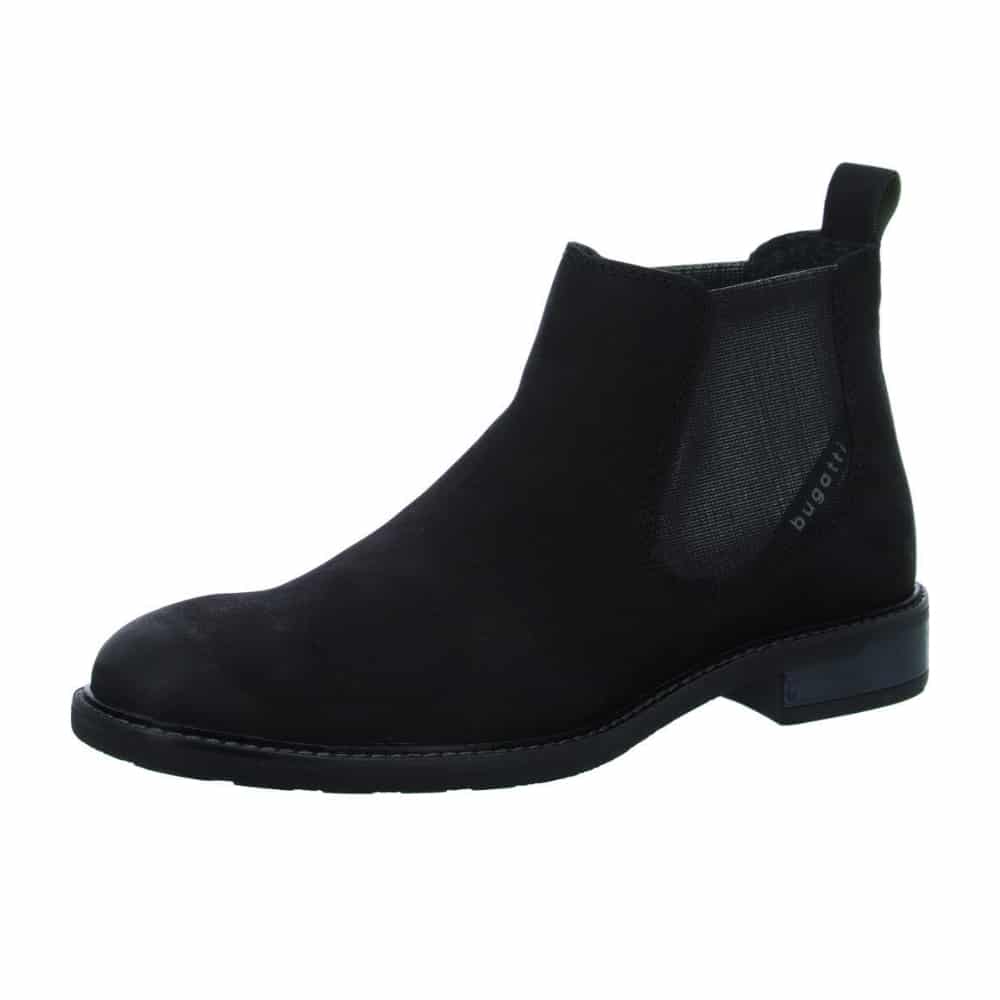


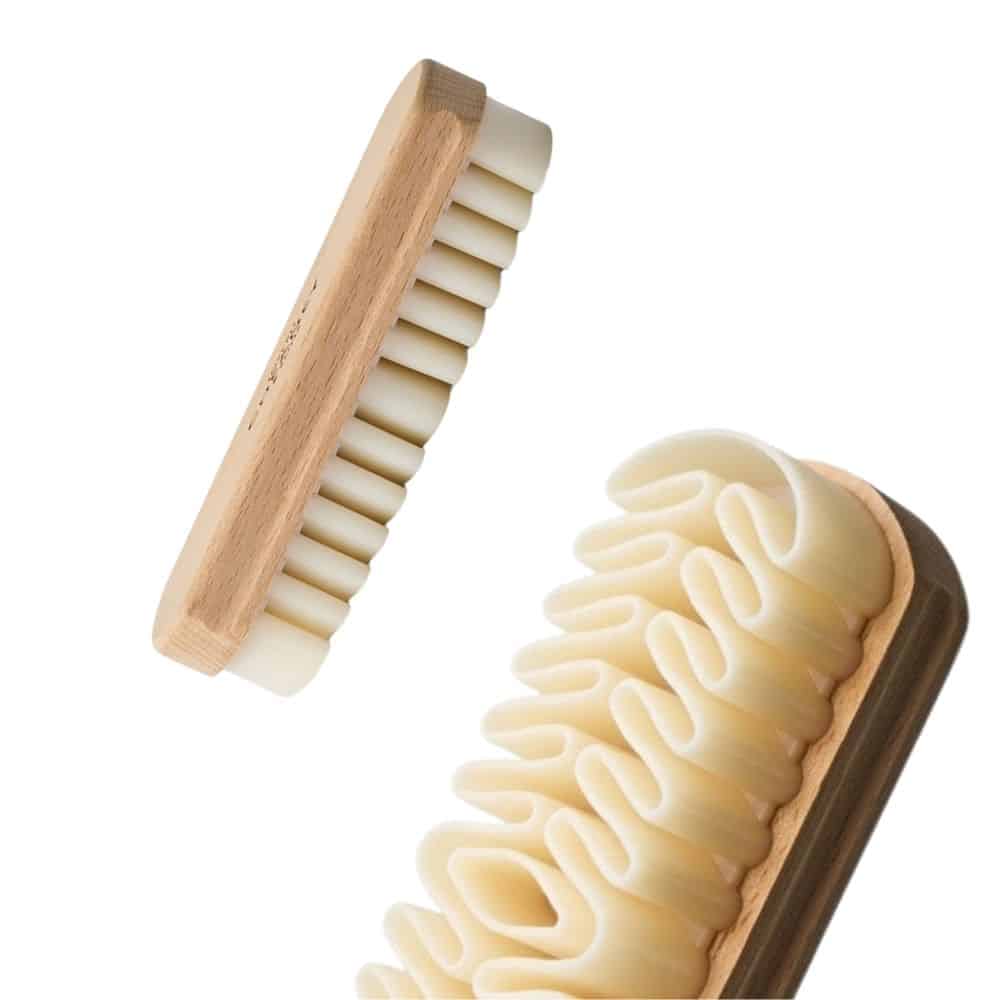
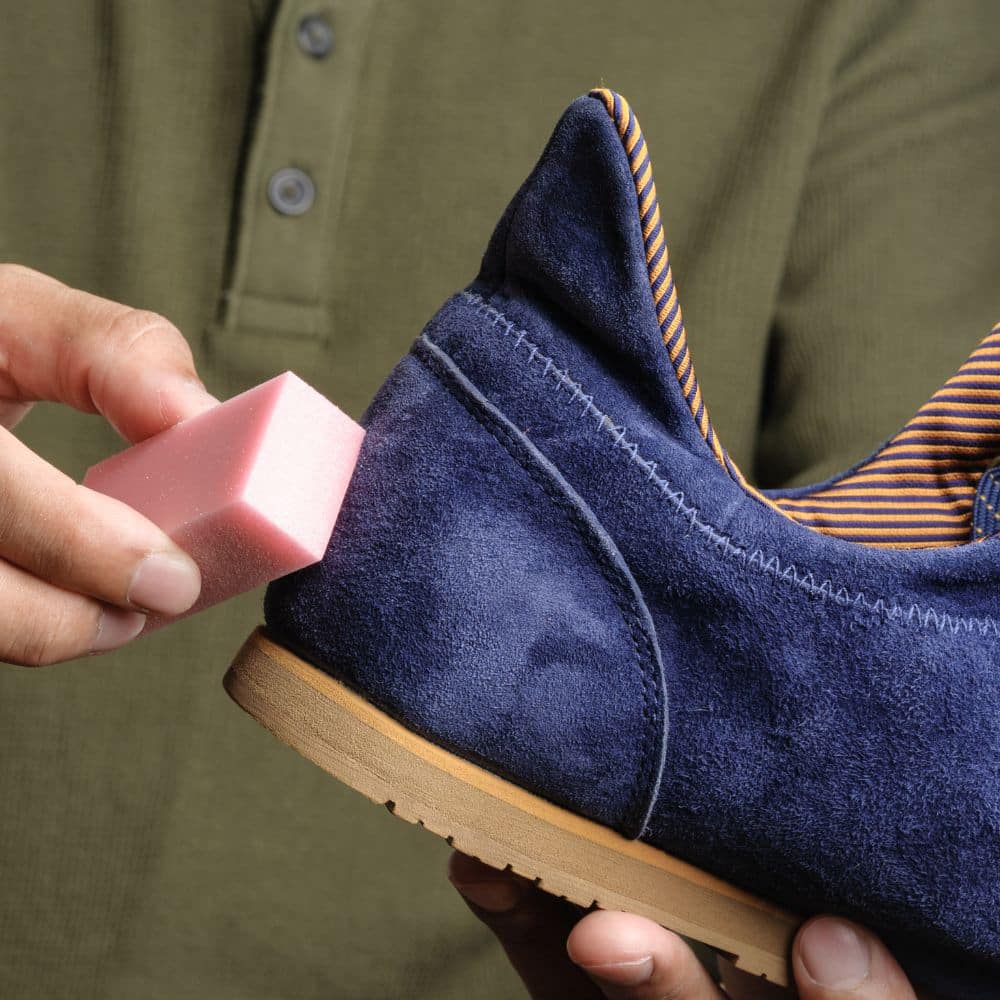
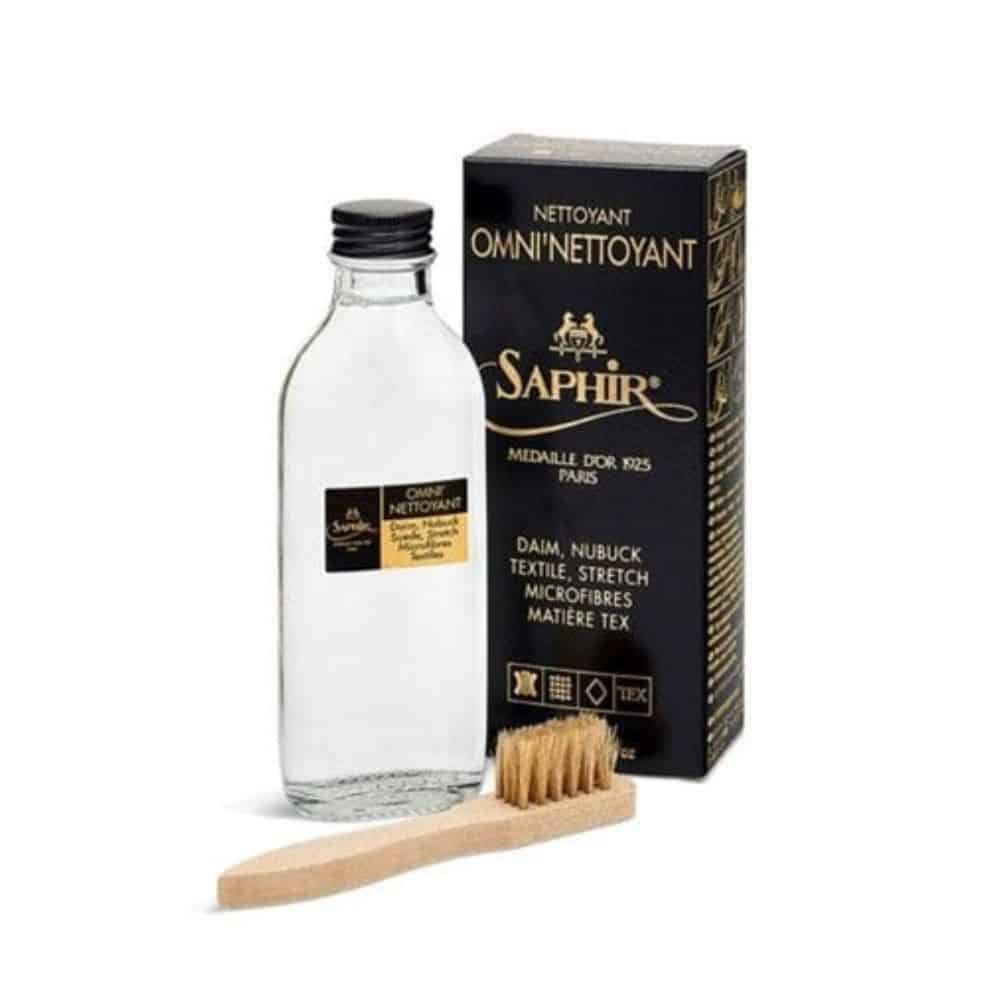
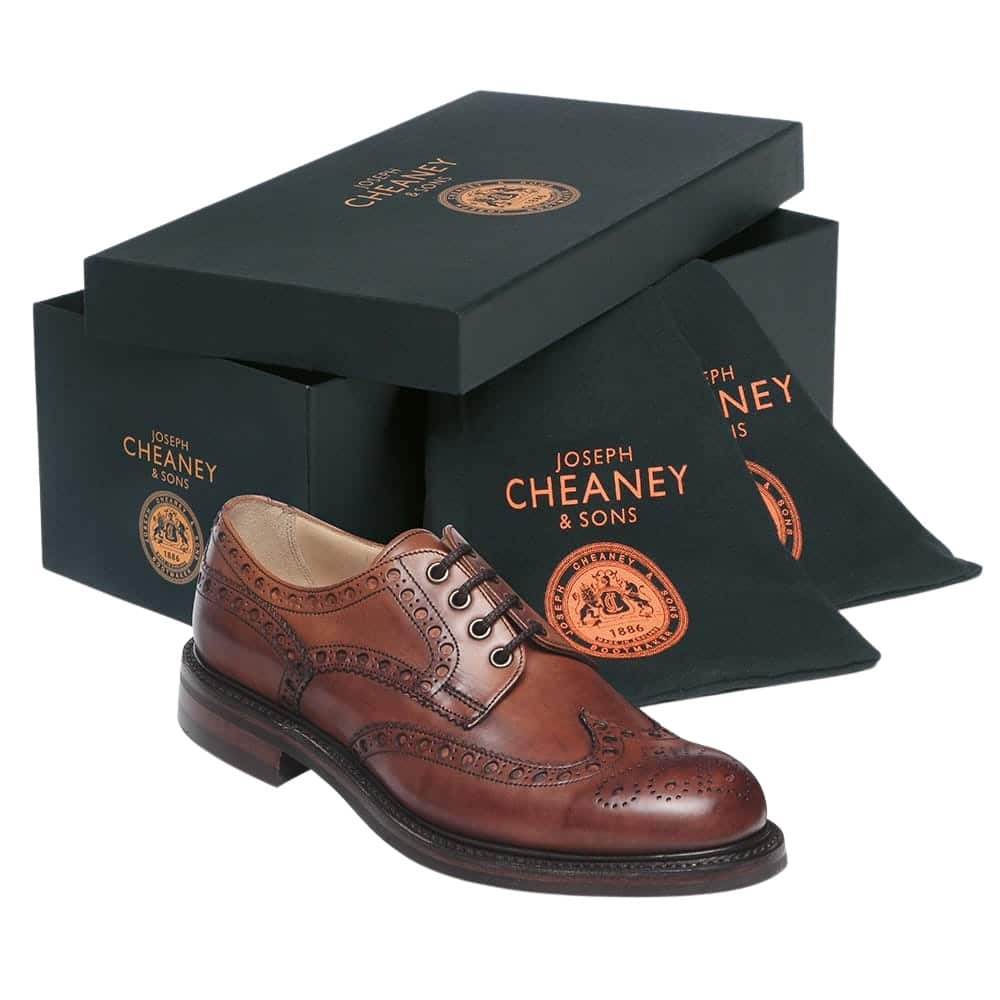
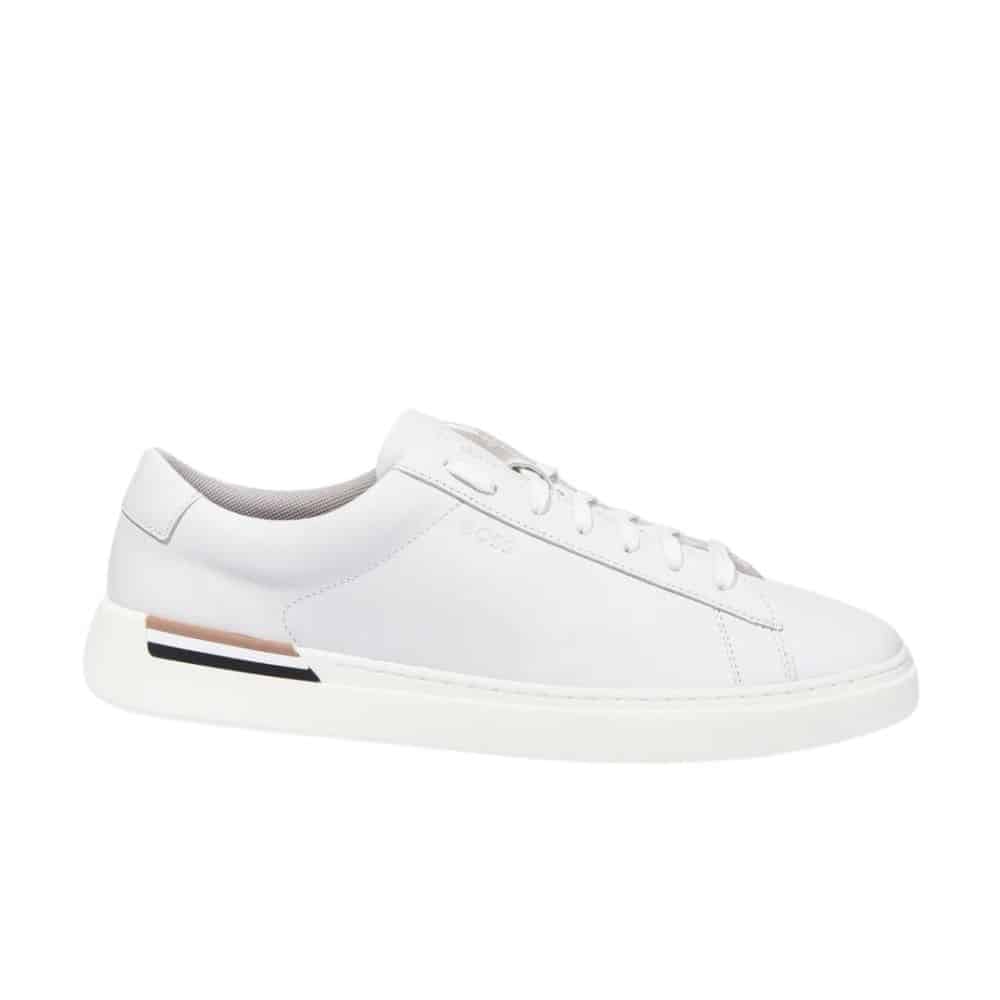
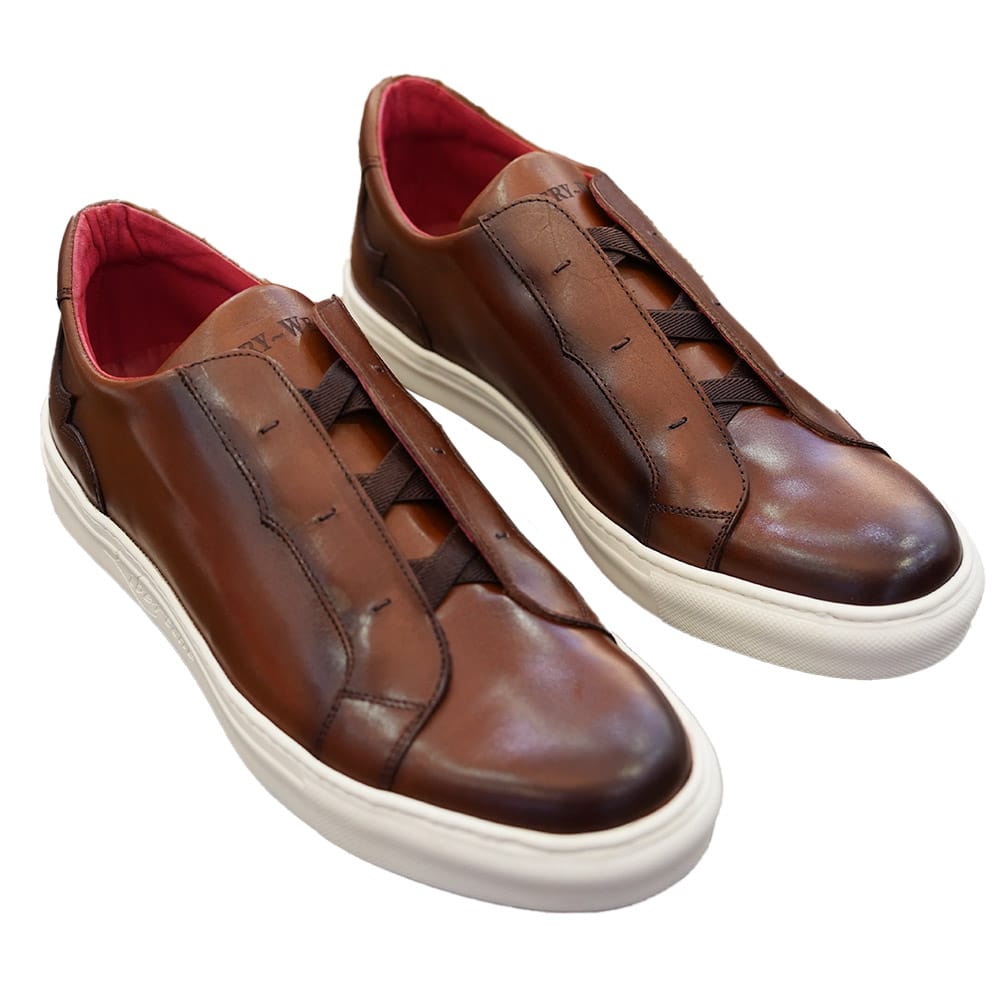
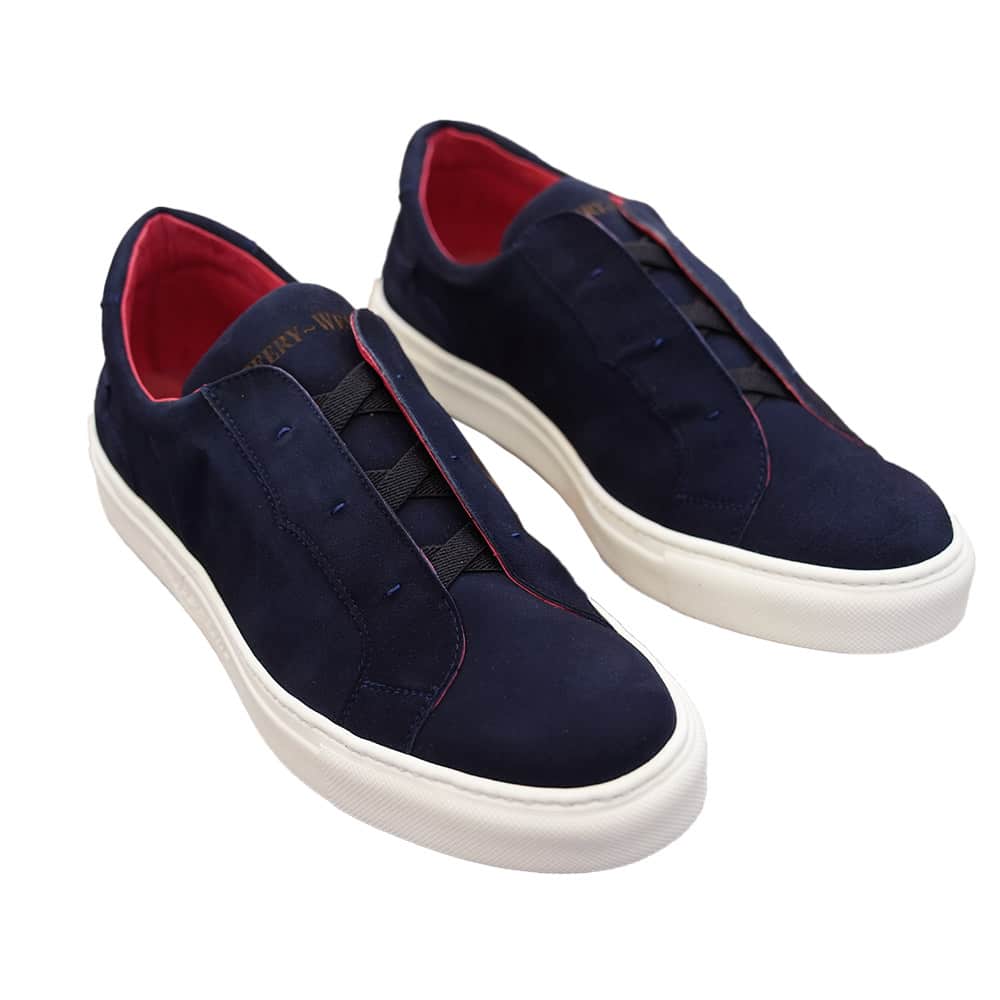



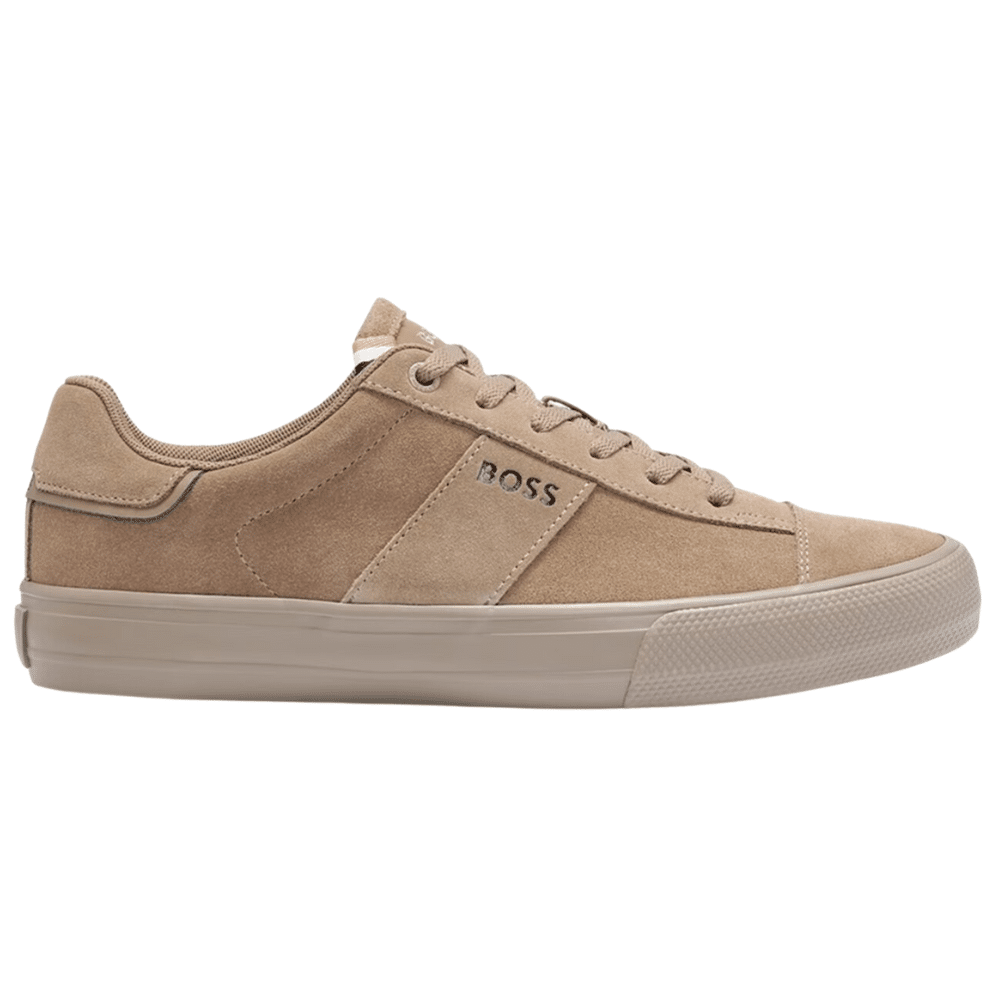







No Comments